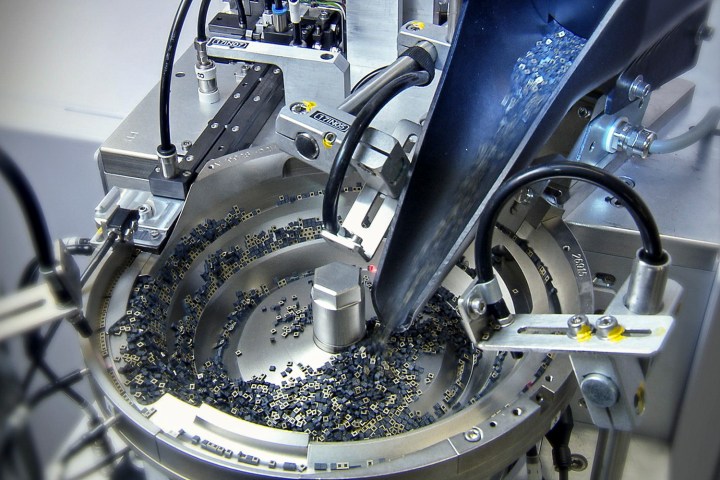
Every new smartphone comes with an auto-rotate function that alternates between the landscape and portrait modes. And, every car sold new in the United States leaves the factory with airbags; it’s the law. One lets you watch YouTube on the train, the other saves your life in an accident. Taken at face value, it sounds like we just listed two random, perfectly unrelated examples of an on-going development process. Bosch points out airbags and smartphones have more in common than most people realize.
The story begins well before the rise of electronics. In the spring of 1923, Bosch introduced a bell that warned motorists if a car’s tire lost air pressure. It was a simple but clever design. Mounted on the inner part of each rim, the bell began touching the ground if the tire pressure got low and consequently rang once per rotation. Think of it as a primitive version of today’s tire pressure monitoring system.
Source: Bosch Sensortec
Technology moved fast. Bosch began making mechanical pressure sensors for fuel-injection systems in the late 1960s, and it started manufacturing lambda sensors for anti-pollution systems in the 1970s. The complex process of developing a smarter successor to the mechanical sensor kicked off in 1987.
At the time, car-makers from all over the automotive spectrum searched for ways to bake an ever-growing number of electronic features into their models. They did this primarily for comfort and safety reasons, but also to comply with the tightening pollution regulations in key global markets like North America and Europe. Bosch stepped up to the challenge.
The auto industry suddenly – and unexpectedly – found itself at the heart of a tech revolution.
The first wave of microelectromechanical systems (MEMS) entered mass production in 1995. Bigger than today’s sensors, they were primarily used in automotive safety and comfort systems. They played an important role in running engine management software, too, and they later helped power driver assistance system like ABS and electronic stability control.
Significantly, MEMS sensors told the on-board computer whether to deploy the airbag or keep it tucked in the dash in the event of a crash. Plasma-etching, a technique also known as the Bosch process, made mass-production possible. The automotive industry suddenly – and unexpectedly – found itself at the heart of a tech revolution fueled by a device smaller than a cherry pit and thinner than a quarter.
Demand grew as sensors gradually got more powerful and smaller during the 1990s. The trend gave market-savvy engineers the idea of applying the technology to sectors outside of the auto industry. Progress came at the perfect time: while grunge faded away and the SUV market boomed, technology gained a foothold in nearly all aspects of our daily lives including work, education, and play.

The second wave of MEMS sensors arrived on the market in the late 2000s. Though cars still used them, they also appeared in a wide array of consumer electronic goods including smartphones and tablets. For example, they powered indoor navigation apps that required highly accurate data.
The Skyrocket Spider-Drone is equipped with a Bosch inertial measurement unit, Luke Skywalker’s electronic lightsaber from Return of the Jedi uses a Bosch accelerometer, and Manus’ VR gloves rely on the company’s magnetometer and sensor hub. 75 percent of MEMS sensors Bosch builds today are used in consumer electronics products.
Tech moves at such a brisk pace that it didn’t take long for the next evolution to arrive. The current wave of sensors appeared in the mid-2010s. They’re even smaller and more powerful than their predecessors, which means they can be used by connected devices in the vast internet of things (IoT) network. They’re found in smart city equipment (like Bosch’s climate monitoring system), in smartphones, drones, and more. They’re still present in cars, too, and they will continue to be in the foreseeable future.
“We are currently developing new angular rate sensors for self-driving cars that, in conjunction with additional inertial sensors, LIDAR, and satellite navigation, collect all the of the vehicle’s driving-related data. As a result, the control system always knows the position and movement of the vehicle and other road users, and can react to this information accordingly,” said Reinhard Neul, Bosch’s project head for innovative sensor technology.
Bosch currently manufactures about 4.5 million sensors a day, and the company told Digital Trends it expects that figure will continue to swell as the number of objects that need to stay connected grows. Present in your office, in your pocket, and in nearly every room of your house, the MEMS sensor has come a long way from its humble beginnings as a mere airbag trigger.



